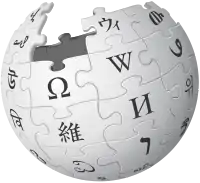unguligrade
English
WOTD – 19 December 2017
Etymology
.JPG.webp)
The hoof of a horse, a type of unguligrade, at Einsiedeln Abbey, Einsiedeln, Switzerland
From Late Latin unguligradus, from ungula (“claw, hoof”) (from unguis (“fingernail or toenail; claw; hoof”), from Proto-Italic, from Proto-Indo-European *h₃negʰ- (“nail”)) + gradus (“pace, step”) (from Proto-Indo-European *gʰredʰ- (“to go, to walk”)). Compare French ongulograde.
Pronunciation
- (Received Pronunciation) IPA(key): /ʌŋˈɡjuːlɪˌɡɹeɪd/
Audio (RP) (file) - (General American) IPA(key): /ʌŋˈɡjuːləˌɡɹeɪd/
- Hyphenation: un‧gu‧li‧grade
Adjective
unguligrade (not comparable)
- (zoology) That walks on hooves.
- 1865 March, J. C. Schjödte [i.e., Jørgen Matthias Christian Schiødte], “XXII.—On the Classification of Cerambyces, with Particular Regard to the Danish Fauna. [Translated from the Naturhistorsk Tidsskrift (1864), ser. 3, vol. ii, p. 483.]”, in Prideaux John Selby, Charles C. Babington, John Edward Gray, and William Francis, editors, The Annals and Magazine of Natural History, including Zoology, Botany, and Geology, volume XV (3rd series), number 87, London: Printed and published by Taylor and Francis, OCLC 925524745, pages 182–183:
- It has perhaps not been observed hitherto that the terms Digitigrada, Unguligrada, and Plantigrada fully apply to the Arthropoda, or that the manner in which the animals treat the ground and the corresponding structure of their feet deserve special attention as distinctive characters of classes and orders in this series of the animal kingdom; yet it is so. […] All Crustacea (including the Myriapoda, which merely exhibit the Crustacean type modified for terrestrial life) are Unguligrada; and the same is the case with all larvæ of Insects with complete metamorphosis, and with some of the lower groups of Insects, especially Thysanoura and Siphunculata—the unguligrade Arthropoda being at the same time, with few exceptions, also Solipeda.
- 1872, Thomas H[enry] Huxley, “The Classification and Organization of the Mammalia”, in A Manual of the Anatomy of Vertebrated Animals, New York, N.Y.: D. Appleton and Company, 549 & 551 Broadway, OCLC 39681481, pages 297–298:
- That excessive development of the epidermis which gives rise to a nail takes place, in the Horse, not only upon the dorsal surface of the terminal joint of the digit, but upon its ventral surface and sides, and thus produces a hoof. The animal is supported by these greatly-developed nails, and hence is said to be unguligrade.
- 1988, R. Norman Owen-Smith, “Prologue”, in Megaherbivores: The Influence of Very Large Body Size on Ecology (Cambridge Studies in Ecology), Cambridge; New York, N.Y.: Cambridge University Press; 1st paperback edition, Cambridge: Cambridge University Press, 1992, →ISBN, page 1:
- The subjects of this book are the animals I will designate as megaherbivores. […] Such animals have been colloquially designated pachyderms; but a thick skin is a minor feature, and it is their very large body size that sets these few species apart from the numerous smaller species of unguligrade herbivore that occupy a wide variety of terrestrial ecosystems today.
-
Derived terms
- subunguligrade
- unguligradism
Translations
that walks on hooves
|
Noun
unguligrade (plural unguligrades)
- (zoology) An animal that walks on hooves.
- 1866 October, “[The British Association for the Advancement of Science. Meeting at Nottingham, August, 1866.] Biology. (Section D.)”, in James Samuelson and William Crookes, editors, The Quarterly Journal of Science, volume III, London: John Churchill and Sons, New Burlington Street, OCLC 892811512, page 543:
- Dr. [Philip] Sclater submitted a classification of the Ruminating Artio-dactyls to the Section, in which he separated the Antilocapra from the other Unguligrades.
- 2010, Seth M. Kisia, “Skeletal System”, in Vertebrates: Structures and Functions (Biological Systems in Vertebrates), Boca Raton, Fla.: CRC Press; Enfield, N.H.: Science Publishers, →ISBN, page 112:
- Unguligrades (L. ungula, hoof) have reduced the number of digits present in their limbs. The unguligrade foot makes contact with the ground at the tips of the most distal digits and hooves have replaced claws. Unguligrades include ungulates such as ruminants, horses and pigs.
- 2011, Michael D. Mattesi, “The FORCE Animal”, in Force: Animal Drawing: Animal Locomotion and Design Concepts for Animators, Waltham, Mass.; Kidlington, Oxford: Focal Press, →ISBN, page 13:
- A cheetah is a digitigrade and moves faster than a horse, an unguligrade.
-
Translations
animal that walks on hooves
|
Coordinate terms
- digitigrade
- plantigrade
Related terms
- unguiculate
- ungulate
Further reading
 ungulate on Wikipedia.Wikipedia
ungulate on Wikipedia.Wikipedia
Italian
Adjective
unguligrade
- feminine plural of unguligrado